Andalucia stands apart from Spain at the tip of the Iberian peninsula, drenched in sunshine, snow and, above all else, character. Having spent years exploring this part of the world, here’s the best southern Spain road trip itinerary through Andalucia.
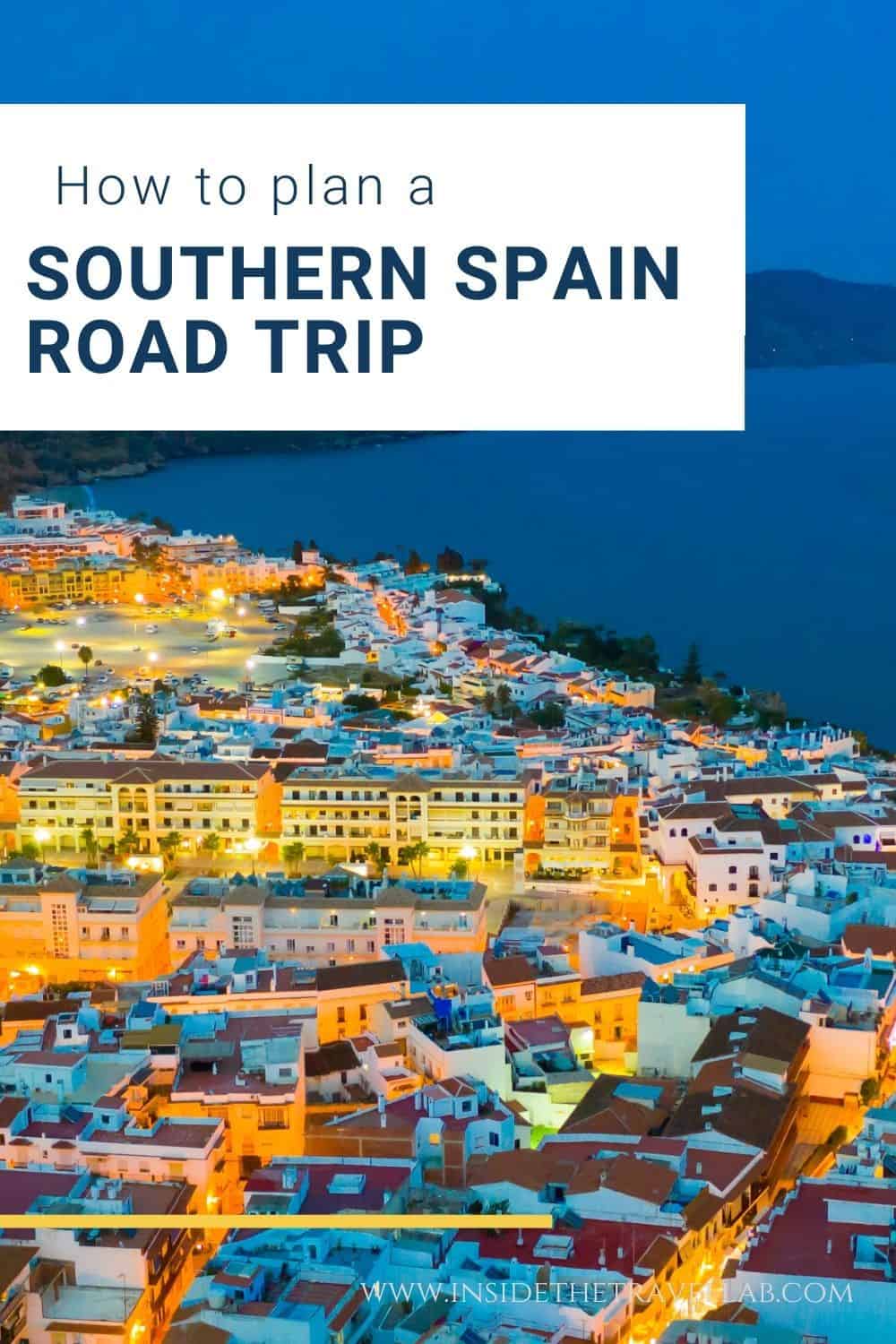
The Perfect Southern Spain Itinerary
My Memories of Southern Spain
Al Andalus. I think about those words right now amid another sea of change.
Al Andalus refers to the part of southern Spain previously ruled by the Moors, a rough approximation of modern day Andalucia. Coins from 716 bear the name in both Latin and Arabic and the UNESCO World Heritage Site in Granada reveals its history through its name: Alhambra. The red one.
You’ll find traces of that Moorish legacy across Spain’s largest region, from the haunting arches of the Mezquita in Cordoba to the latticework in the major meeting point in Seville: La Giralda.
The timing of this post was brought to you as a result of the #SpainOnMyMind campaign, created and managed by iambassador in partnership with the Spain Tourist Office. We always keep the right to write what we like, as ever, as always. Otherwise, what’s the point?
Recommended
I love sharing the best travel resources I can find.
- I never book a flight without looking on Skyscanner first
- My favourite one stop shop for airport transfers, food tours & excursions is Get Your Guide
- Out of the big accommodation machines, I use Expedia and Booking.com the most
- I’ve hand-picked useful travel gear and tools for you in my Amazon shop. Never leave home without a travel adapter or collapsible water bottle. I’d also recommend these soft ear plugs and a sleep mask.
- Access all our planners and budget spreadsheets in the Travel Toolbox ©
- Plan the perfect road trip with our Road Trip Planner & Toolkit ©
- Use these packing cubes to make life so much easier on the road.
- Save on mobile phone roaming charges with an eSIM from Airalo.
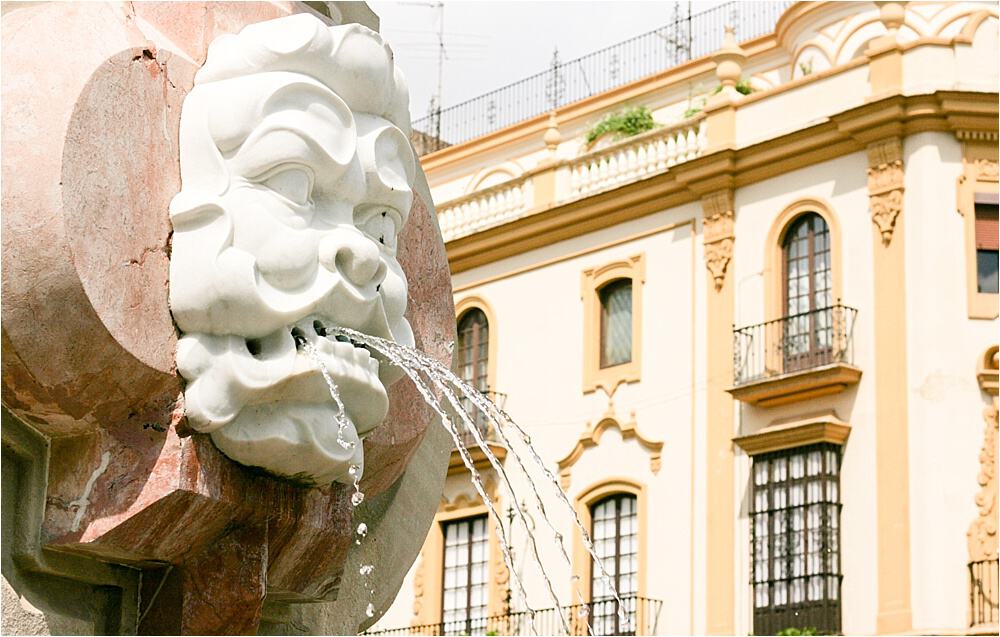
What is Andalucia Like?
But Andalucia has a powerful character of its own, one fierce with tradition, passion and, if we can perhaps take a break from the serious for a moment, some stunningly cold red soup.
For years, I lived there, on the outskirts of Seville, in a place called Aljarafe. I walked through olive groves, celebrated at village ferias and tried not to blush as everyone stopped and stared at my pale skin and blonde hair at every doctor’s appointment or foray into the local post office.
At weekends, we’d grab skis in the winter, bound for the slopes of the Sierra Nevada. In summer, we’d flee to the coast. Spring saw the silence of Semana Santa followed by the week long extravaganza of Feria and in autumn, we’d join visiting friends to tour around the rest of Andalucia.
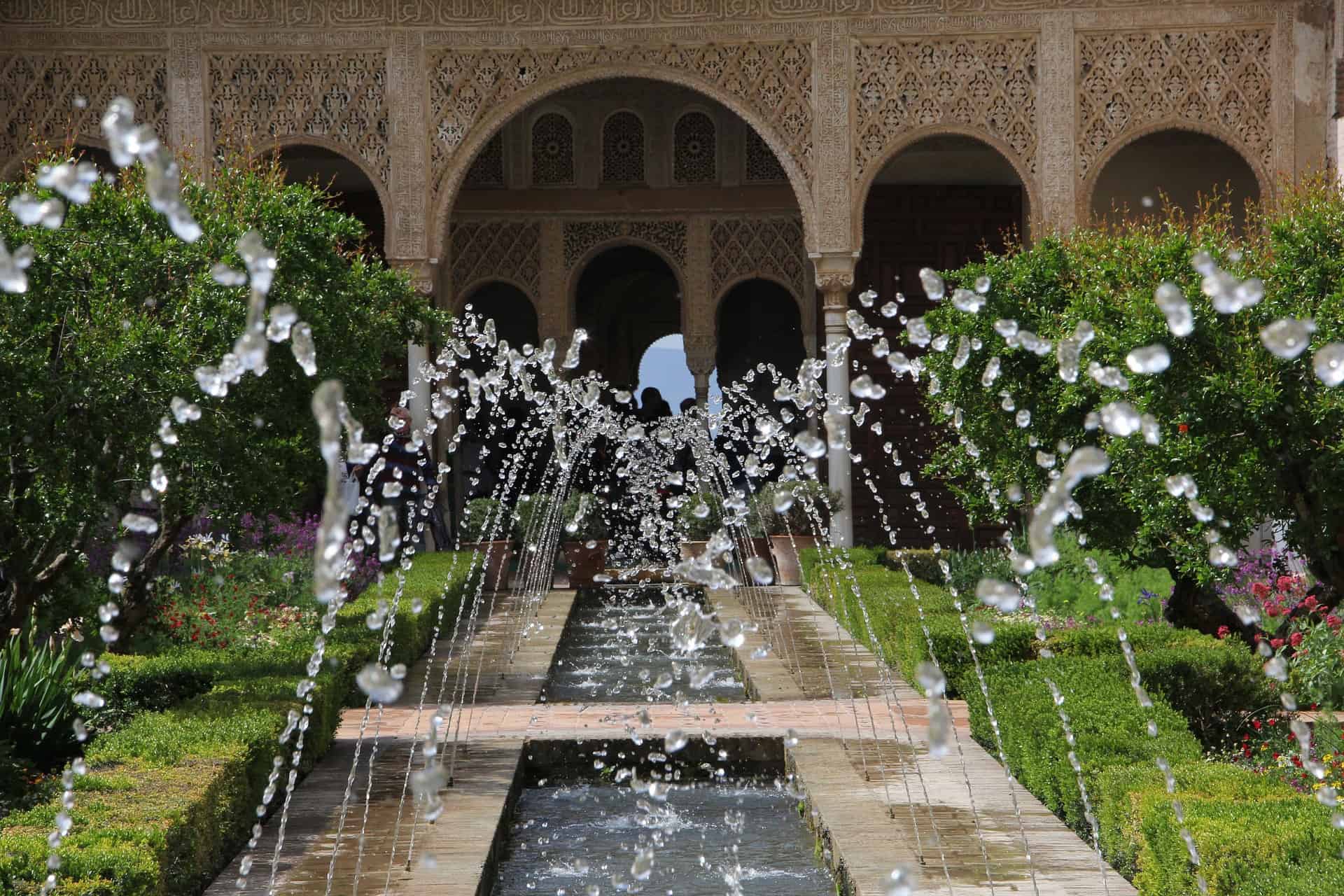
The Practicalities
Planning a Trip to Southern Spain
The number one tip for planning a southern Spain road trip itinerary is this: don’t go in August! Many places close down but the temperature in the inland cities remains ferociously, unforgivingly hot. Many an overconfident traveller has been rendered into a sweaty, collapsing, heatstroked blob by failing to take this into account.
Seriously, guys. Seville gets seriously hot. Candle melting, tyre poppingly, tourist trashingly hot. There’s a reason why locals still have siestas and why everyone who can leaves the city for the coast in the summer.
It’s an amazing place. But plan your Andalucia itinerary for any season but summer.
When to Visit Southern Spain
When is the best time to visit southern Spain? In the shoulder season of spring and autumn and definitely not in the height of summer! While the coast can entertain you on the beach with a 30 degree breeze, in the city of Seville, temperatures can reach 50 degrees, with candles melting, tyres popping and visitors flagging. See how I wrote that again? I really want you to pay attention to this one simple fact!
Granada and the Alpujarras are cooler again but for a southern Spain itinerary where you can enjoy walking around, look to travel to Spain between May and June or late September and October. That’s also a great time to visit the white villages, or Pueblos Blancos, like Mojácar Pueblo in Almeria.
Winter is cool but not frozen and can be quite wet. You can ski on the slopes by the Alhambra but the resort is quite modest in size.
To catch the festivals of Semana Santa and Feria, you need to check the calendar each year. The dates move around Easter and accommodation fills up fast.
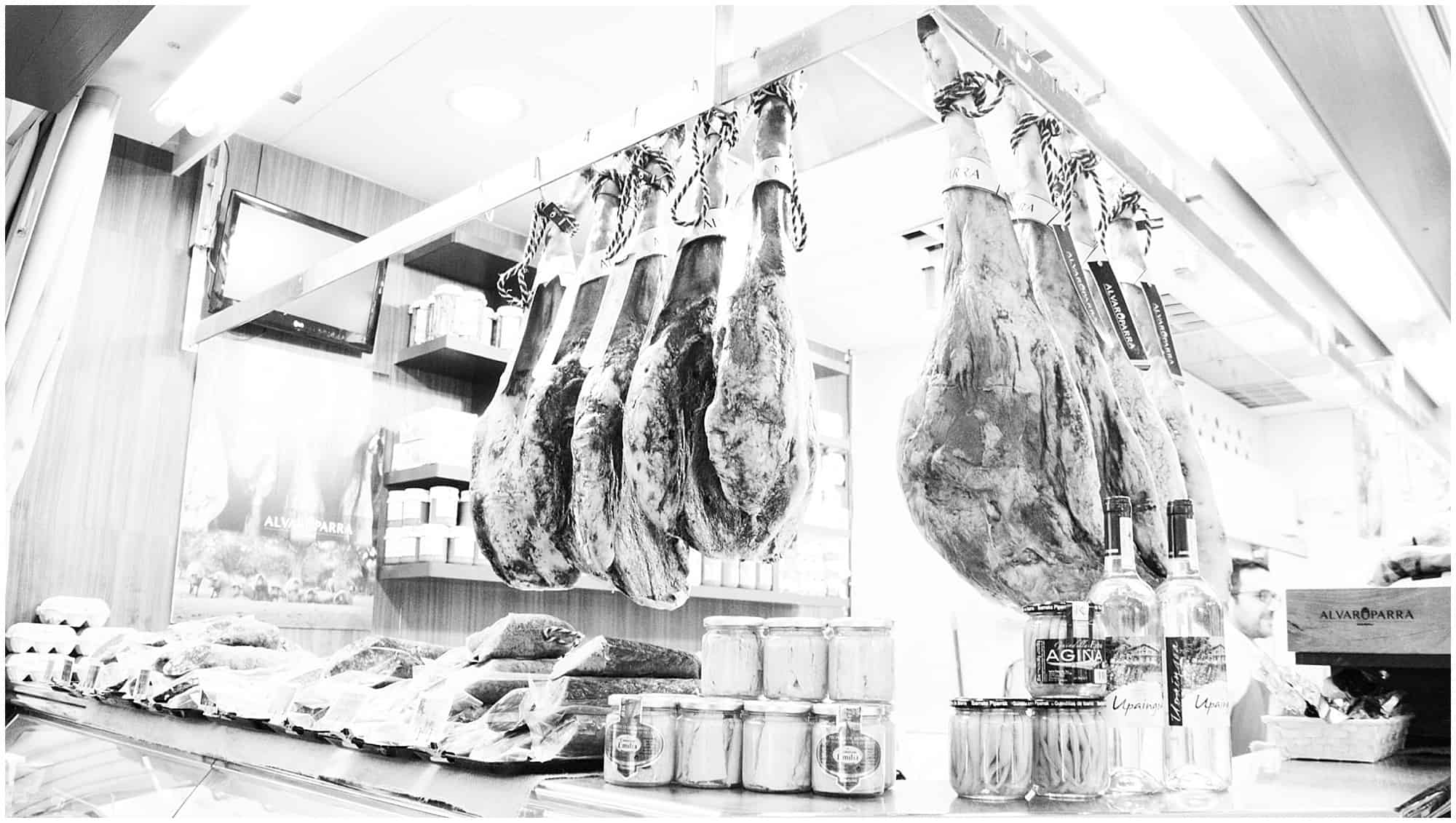
What to Eat in Southern Spain
Tapas isn’t a stereotype in southern Spain, it’s a way of life. Even the most abandoned looking service station at the edge of the road serves up fresh, homemade tapas and it’s utterly delicious.
People tend to have meals at home and tapas out with friends. Breakfast is a small but simple affair, typically consisting of toast and coffee darker than the heart of Satan.
Mealtimes in Southern Spain
Lunch takes place pretty late according to US and UK customs, at around 3pm and dinner takes place between 9 and 10pm. In the tourist centres, you’ll be able to find restaurants open at other times but in the more remote areas, there’s no chance, I’m afraid.
Pack some snacks if you don’t think you can last that long but it’s worth giving it a try at least once during your southern Spain itinerary.

Traditional Dishes in Southern Spain
Jamon is famous across Spain but the finest in the world comes from Andalucia. Known as Jamon Iberico de Bellota or Pata Negra, this melt in the mouth charcuterie is the most expensive cured meat in the world. Pata negra means “black hoof” and the pigs are raised outside in a free range manner and fed a diet of acorns and berries.
Not every tapas bar will serve it, however, and that’s probably a good thing for both your wallet and your waistline. But do make sure to try some at least once. Although, be warned. It may convert you into a jamon snob for life.
Gazpacho, poorly described as a “cold tomato soup” makes sense when you feel the real heat of Andalucia. Cordoba and Seville jostle for ownership over the more locally developed salmorejo, a delicious vinegar-based cold soup with a boiled egg served on top.
Other key dishes includes gambas, albondigas and tortilla. While you will find paella for sale in the main cities, the rice hails from Valencia and so it’s not a typical dish of southern Spain.
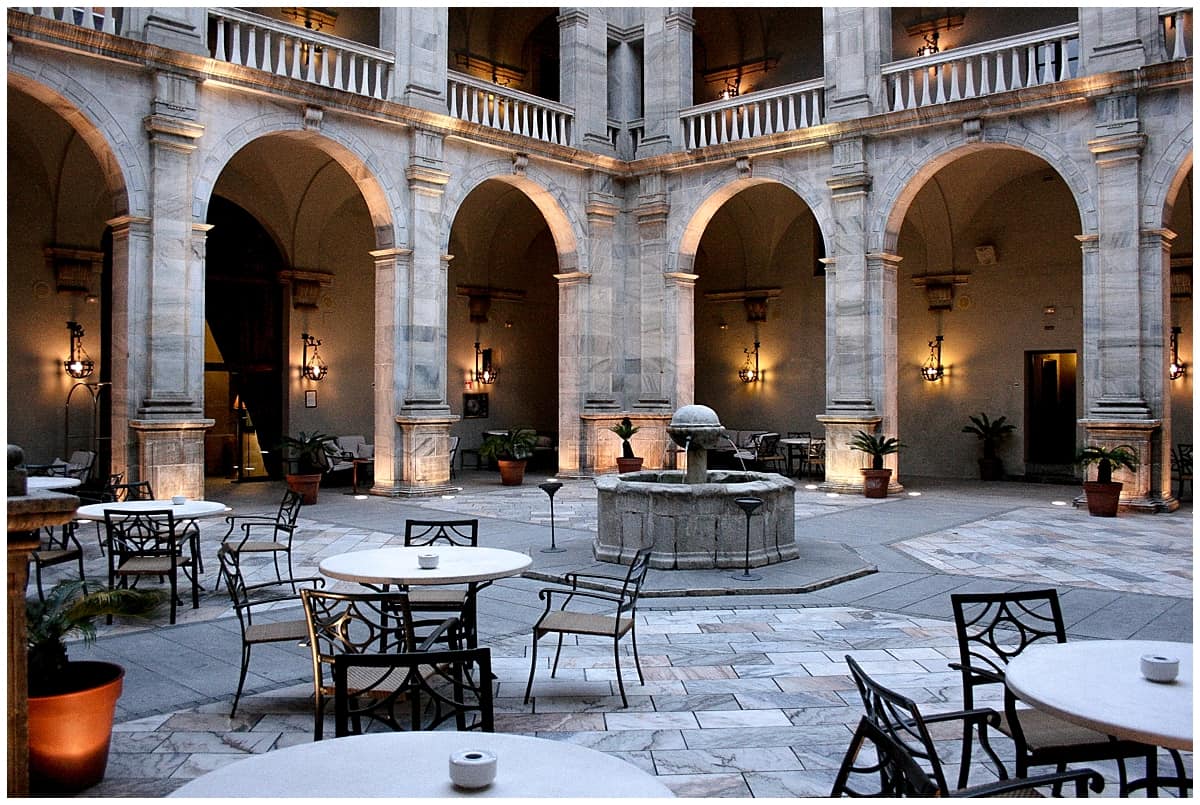
Where To Stay in Southern Spain
You will find yourself overflowing with characterful and atmospheric places to stay in southern Spain. While the big chains do exist in the big cities, the true delight of any southern Spain trip itinerary is to delight in the sense of place.
With that in mind, I’d highly recommend staying in ancient forts, renovated palaces and converted monasteries in this Andalucia itinerary.
To make life easier, the Spanish government have created a series of Paradores, hotels generally built in or from buildings of historic interest and with menus sourced from local traditions and flavours.
That said, you’ll find some stunning luxury properties across Andalucia, and some budget boltholes too. Just don’t expect much choice in the rural areas and smaller towns but try not to worry about it: most places are beautiful and if you make a mistake, the outdoor scenery will compensate.
Also, if you’re from the US, get ready for a different style of service. Tipping is, by and large, not expected and nor is the attitude that the customer is always right.
Road Trip Through Southern Spain: At A Glance
- Day 1 – Arrive in Malaga
- Day 2 – Ronda and Jerez de la Frontera
- Day 3 – Cadiz
- Day 4 – Doñana National Park to Seville
- Day 5 – Seville
- Day 6 – Cordoba & The Mezquita
- Day 7 – Granada & The Alhambra
- Day 8 – The Alpujarras Mountains
- Day 9 – Malaga
Have additional days in Andalucia? Add Almería, Malaga city centre and Gibraltar to your southern Spain itinerary.
Southern Spain Itinerary: Day By Day
Ok, enough pleasantries and travel tips. Let’s start your Andalucia itinerary!
Arrive in Malaga
Malaga has a bad rep in the UK for being a place where people go to get drunk in the sun. And, well, there is some truth to that.
However, Malaga itself has a beautiful Old Town and great access to the southern coast of Spain. It’s also the biggest airport in southern Spain. While Seville and Granada do have their own international airports, the flight paths are more limited and you’ll often find that Malaga provides you with more choice. If that doesn’t work, look at flights into Faro in neighbouring Portugal.
Another way to fly into southern Spain involves a transfer in Madrid or Barcelona and hopping on a domestic flight to Seville or Granada. If that’s what you choose, then tweak the order of this Southern Spain itinerary.
However, I’ve opted for the easiest option for most travellers and have you flying in to Malaga. It’s easy to pick up a rental car, the roads are smooth, wide and straightforward and the scenery is beautiful.
Are you ready? Let’s go.
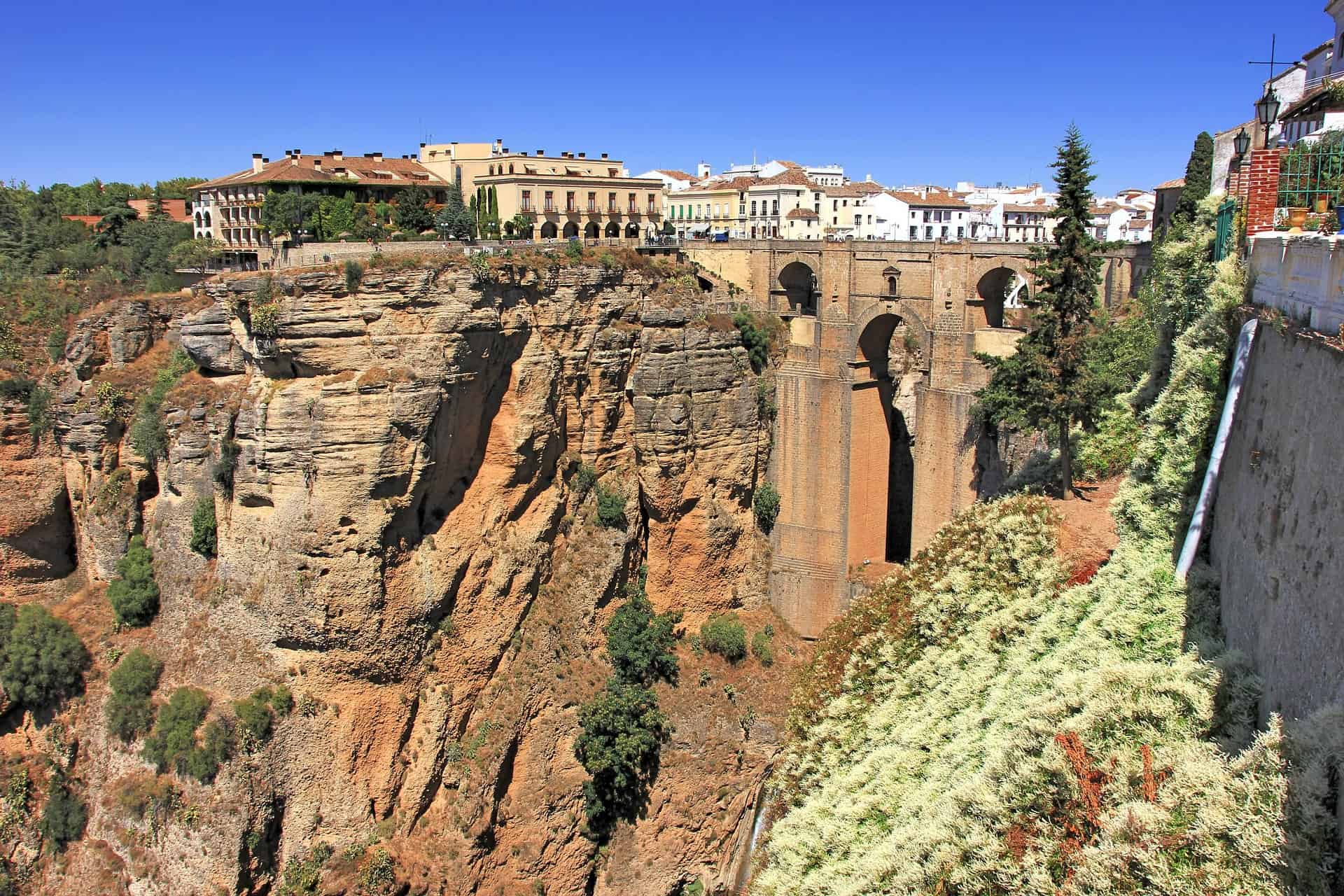
Ronda and Jerez de la Frontera
Ronda
Not to be confused with Rondda in the grey and drizzly South Wales Valley, the Ronda in Andalucia will sear itself into your memory on account of its ludicrously tall bridge with a teetering fall and river below.
This small Andalusian town clings to the rocky outcrops of the El Tajo gorge, the Guadelevin River flowing far, far beneath. Today, you’ll find a genteel and welcoming atmosphere but that betrays a stormier past: the local bandit museum fills in the details.
Back in the day, this part of Andalucia was wild country, with blood weddings, bandits and melancholy. That element of sorrow and danger underpins the music of flamenco, a sorrowful, foot-stomping display of passion despite the apparent cheer of polka dot dresses in tourist kiosk windows.
- A great place to stay in Ronda is the Parador de Ronda, with rooms overlooking the steep drop into that gorge.

Jerez de la Frontera
I love Jerez de la Frontera.
Known as the home of sherry, the bodegas that illustrate the story behind the underrated drink tell so many great stories.
First, the sherry. The drink takes, on average, an astonishing century to make. Bodegas show barrels on top of barrels, as craftsmen mix the produce from one with the one below it and leave it for a while. Then mix from the one below. And so on.
The process is called solera and all told, over 100 years of craftsmanship go into one simple drink.
To call a drink “sherry,” derived from “jerez,” it must come from Jerez de la Frontera, Sanlúcar de Barrameda, or El Puerto de Santa María in the Cadiz region of Andalucia.
But as if that the sherry were not enough, Jerez also has the most famous equestrian training centre in Spain and is a beautiful place to visit in its own right.
- Top tip: arrange for a sherry tasting in one of the local bodegas. Discover manzanilla, a strong, white fortified wine and make sure to take a few bites of tapas at the same time.
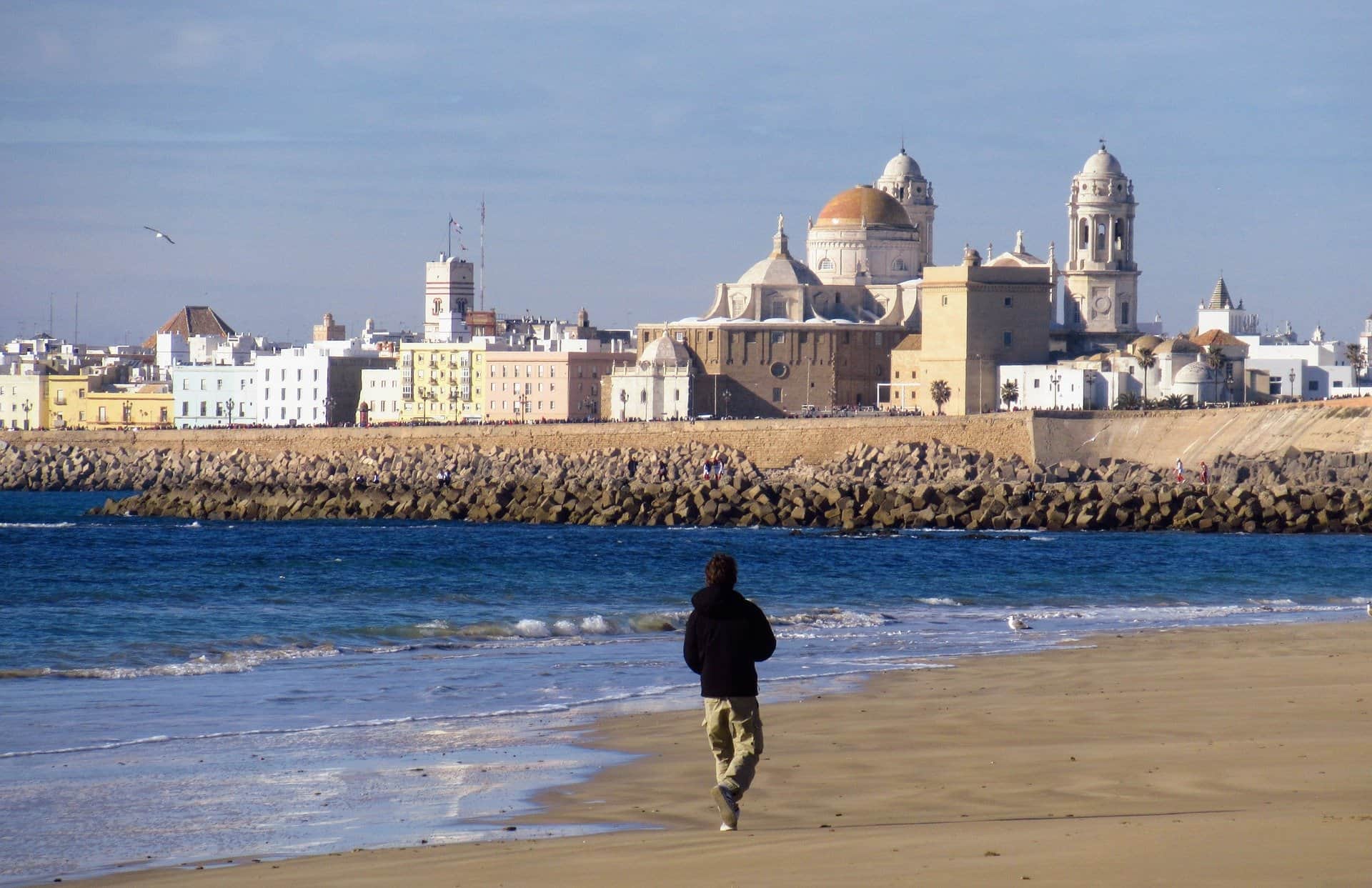
Cadiz
The coastal city of Cadiz can seem like a hidden gem in comparison to some of the more famous cities on this southern Spain trip itinerary. Its beach, the Playa de la Caleta, sits right by the Old Town, while local fishing boats bob on by.
If the sea scene looks familiar, it’s because it doubled as Havana in the Bond film Die Another Day, when a dazzling Halle Berry emerged from the sea. Two former Moorish fortresses overlook the coast, as does the balneario, a spa that snuggles into the cove.
Cadiz also is home to the oldest covered market in Spain, the Mercado Central de Abastos. First built in 1838, and renovated significantly since then, around 150 market stalls stand there today, with calls of manzanilla, empanadas and, these days, even sushi.
To escape the city and head to more wild expanses of sand, drive for less than an hour to the Playa del Faro. The lighthouse here, the Cabo de Trafalgar, looks mighty on the horizon, but the best place to eat is the the thatched shack Bar Las Dunas at the point where the road turns into sand.
And in case you were wondering? Yes, it is the Trafalgar of the battle of the same name. Although it’s hard to imagine that in the peace-filled sunshine waves today.

Doñana National Park
Can I tell you a secret? The Doñana National Park is an incredible spot that too many people miss from their southern Spain itinerary.
Think flamingoes spilling over tranquil lakes. The Spanish imperial eagle amid undisturbed reeds. And, if you’re really lucky, the Iberian lynx.
Of course, I am not the only person who has noticed. Doñana is a UNESCO World Heritage Centre and you can book tours from Seville to explore the park. It’s just that I see it missing from many a south Spain itinerary and cannot understand for the life of me why that is.
Even the nearby village, El Rocio, captures hearts and minds with the smoky incense of her shrines. And the fact that bars have raised tables so that cabelleros who arrive on horseback don’t need to dismount to enjoy a cerveza.
Within the context of this Andalucia road trip itinerary, I’d recommend you spend the night near Cadiz, spend the day at Doñana and then head to Seville to make the most of the evening there.
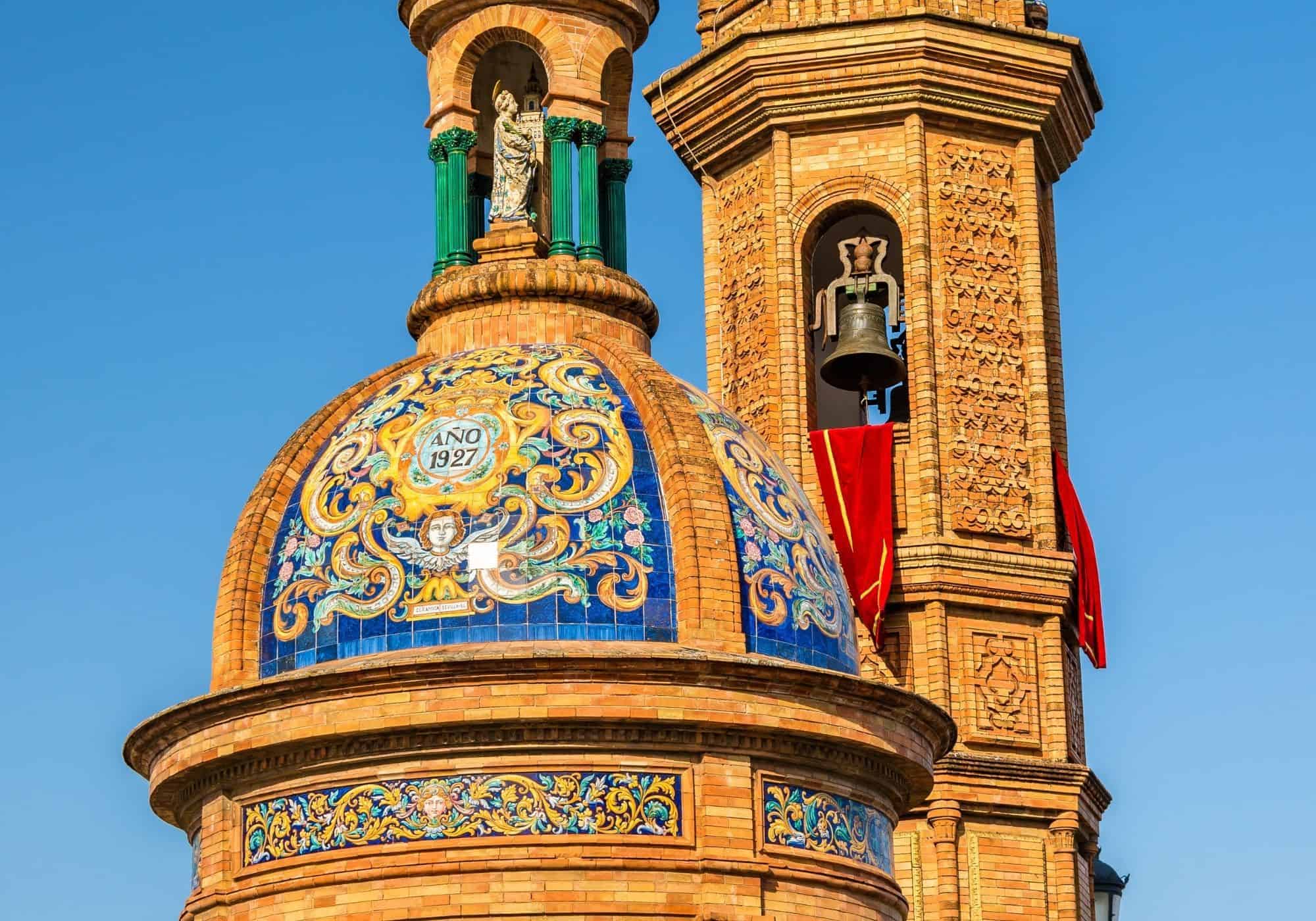
Seville
Ah, Seville. This is the biggest hitting of the cities in Andalucia, with the most to do and the hairiest of introductions if you’re running this southern Spain itinerary as a road trip. Those flyovers on the entrance to the narrow, narrow Old Town are fierce.
All that said, as Spain’s 4th largest city, you can expect to find a lot to do in Seville. I lived there for nearly four years and still wouldn’t say that I had explored every last bodega, shrine and cobbled street.
But I’m getting ahead of myself.
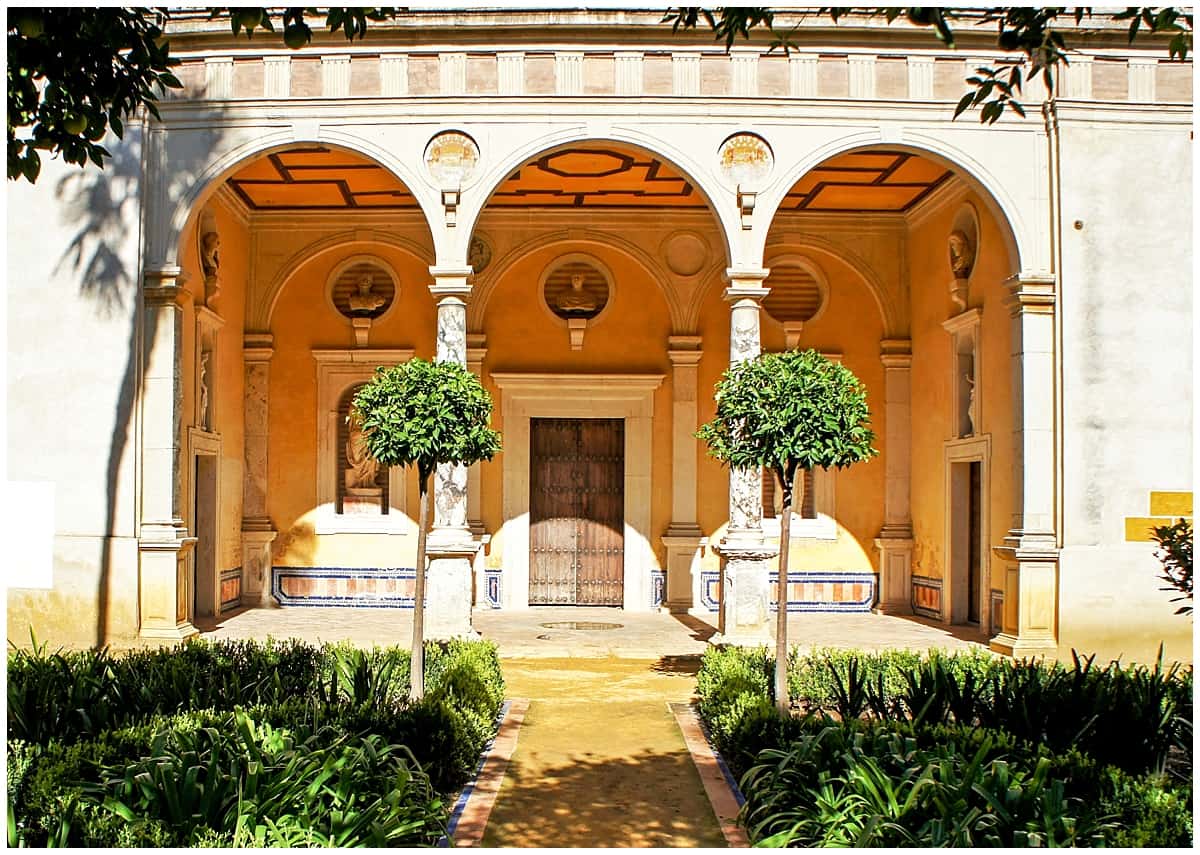
Seville’s Golden Days (Quite Literally)
Seville made its name during the literal gold rush of the “discovery” of the “New World.”
Christopher Columbus sought financing from Queen Isabella and King Ferdinand in the grounds of Seville’s Real Alcazar.
He recruited sailors from the district of Triana and Columbus’ remains are said to be buried within the grounds of Seville’s Cathedral. The Archivo General de Indias houses over 80 million pages of documents relating to Spain’s overseas empire.
At one point in time, Seville was the most powerful city in the world.
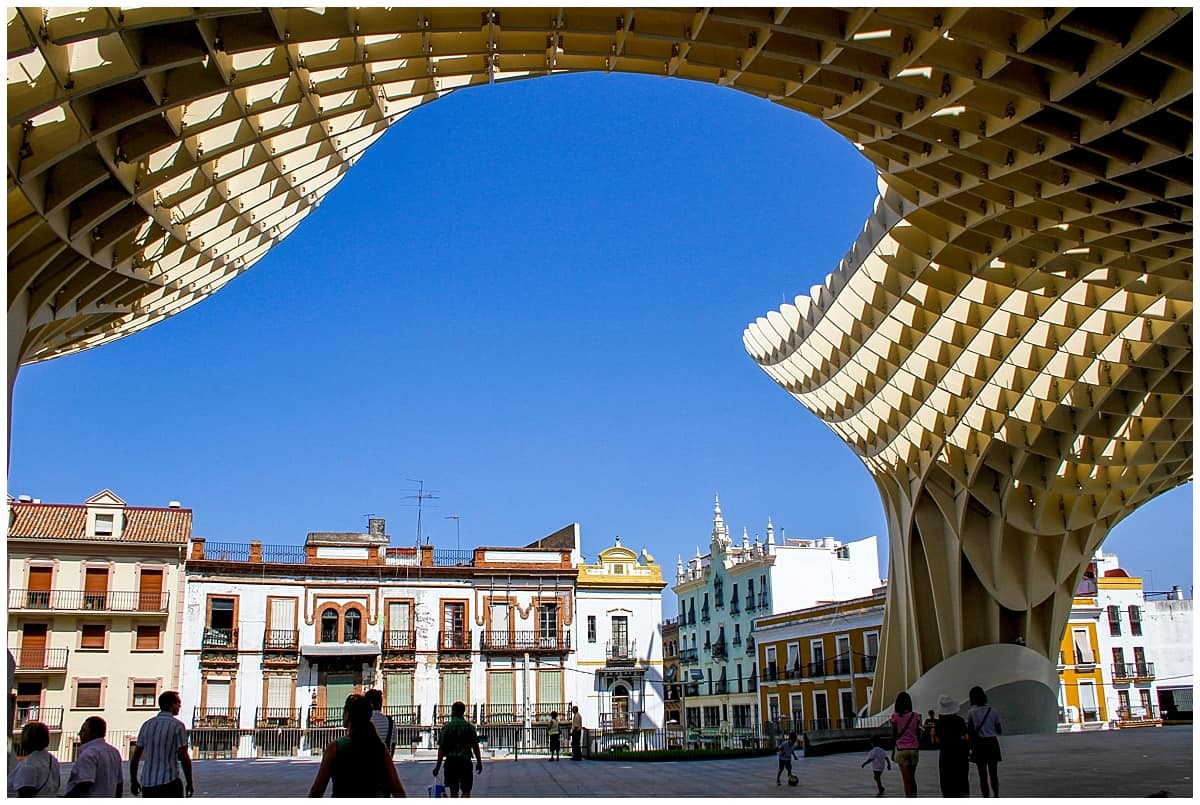
Seville in More Modern Times
Today, unsurprisingly, much of the rich architecture and state buildings stem from that time. But the city hasn’t frozen.
The new addition of Las Setas, the mushrooms, officially known as the Metropol Parasol, may have caused a stir at the time but seem to have won over tourists, if not locals, over the years.
The Plaza de España, a great expanse of ceramic creation set amid a grand, leafy park, dates back only to 1928 and the Ibero-American Exposition.
You could spend your time so many different ways in Seville, but a few things make everyone’s list: La Giralda, the Cathedral spire built on top of a mosque in the atmospheric Old Town; the Barrio Santa Cruz and its rooftop bars; the Flamenco museum or shows (skip the tourist performances and catch the mournful real thing at the La Carbonería;) and the view from the river (make like a tourist and take a cruise.) And the tapas. Oh, how you can’t miss the tapas.
After that, here’s a more in depth guide on the best things to do in Seville.
- Seville off the beaten path: the city’s hidden gems
- Exploring Triana, the wrong side of the tracks in Seville.
- The best souvenirs to buy in Seville: a shopping guide.
- The best places to stay in Seville
- The best tapas bars in Seville
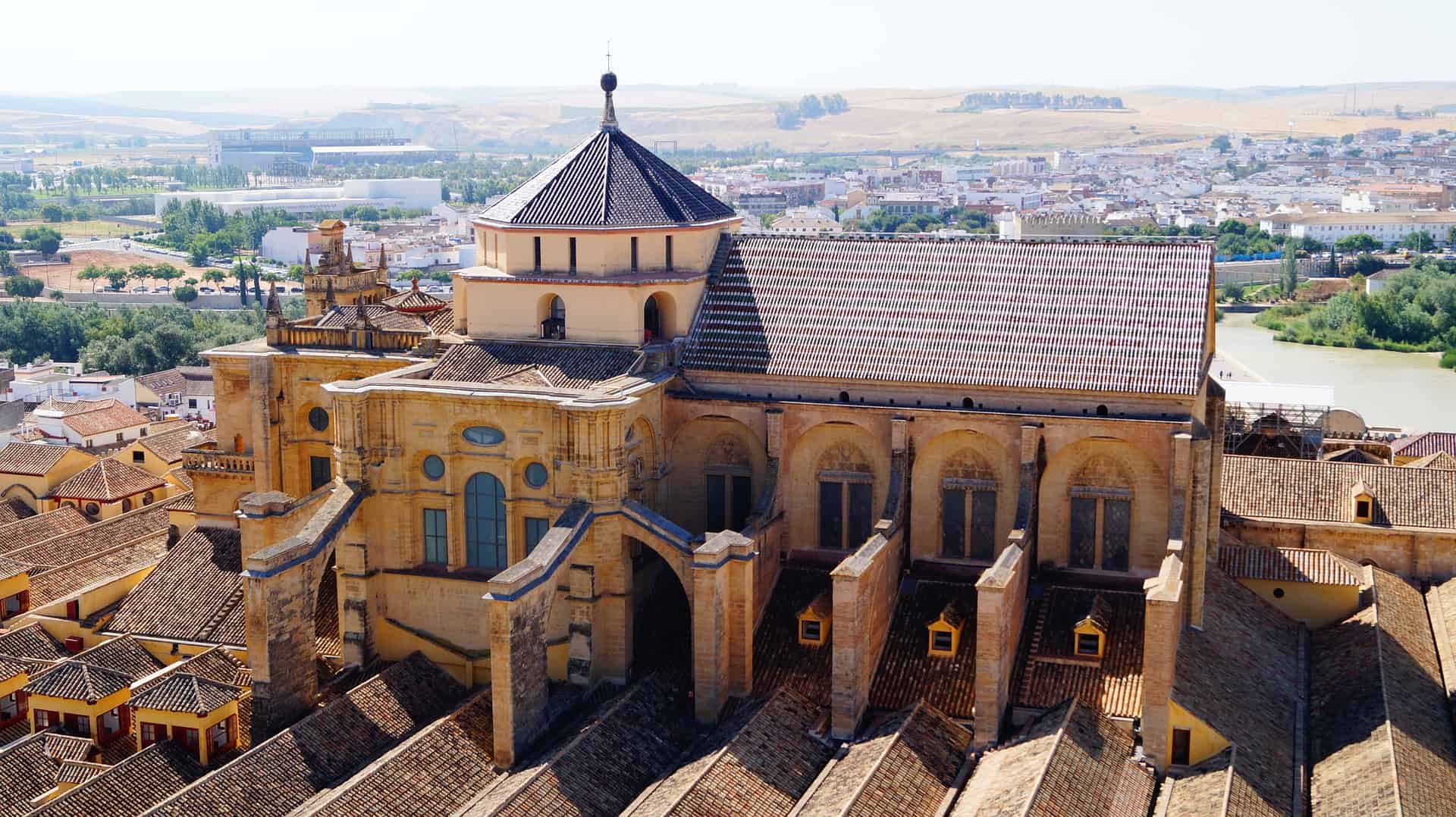
Cordoba
The beautiful city of Cordoba would be a show-stopper if it didn’t have the misfortune of being so close to both Seville and Granada. It has narrow cobbled streets with white-washed walls and bright pink flowers, surrounding olive groves and fragrant orange trees amid tapas bars with centuries of history…
It’s an enchanting place. But with only one week to explore southern Spain, I’m going to suggest you keep your visit here short and spend more time in Seville and Granada at the Alhambra.
However, there is one sight you absolutely must see. The mezquita or mosque or, to call it by its official name, the Catedral de Cordoba.
Confused? Let me explain.
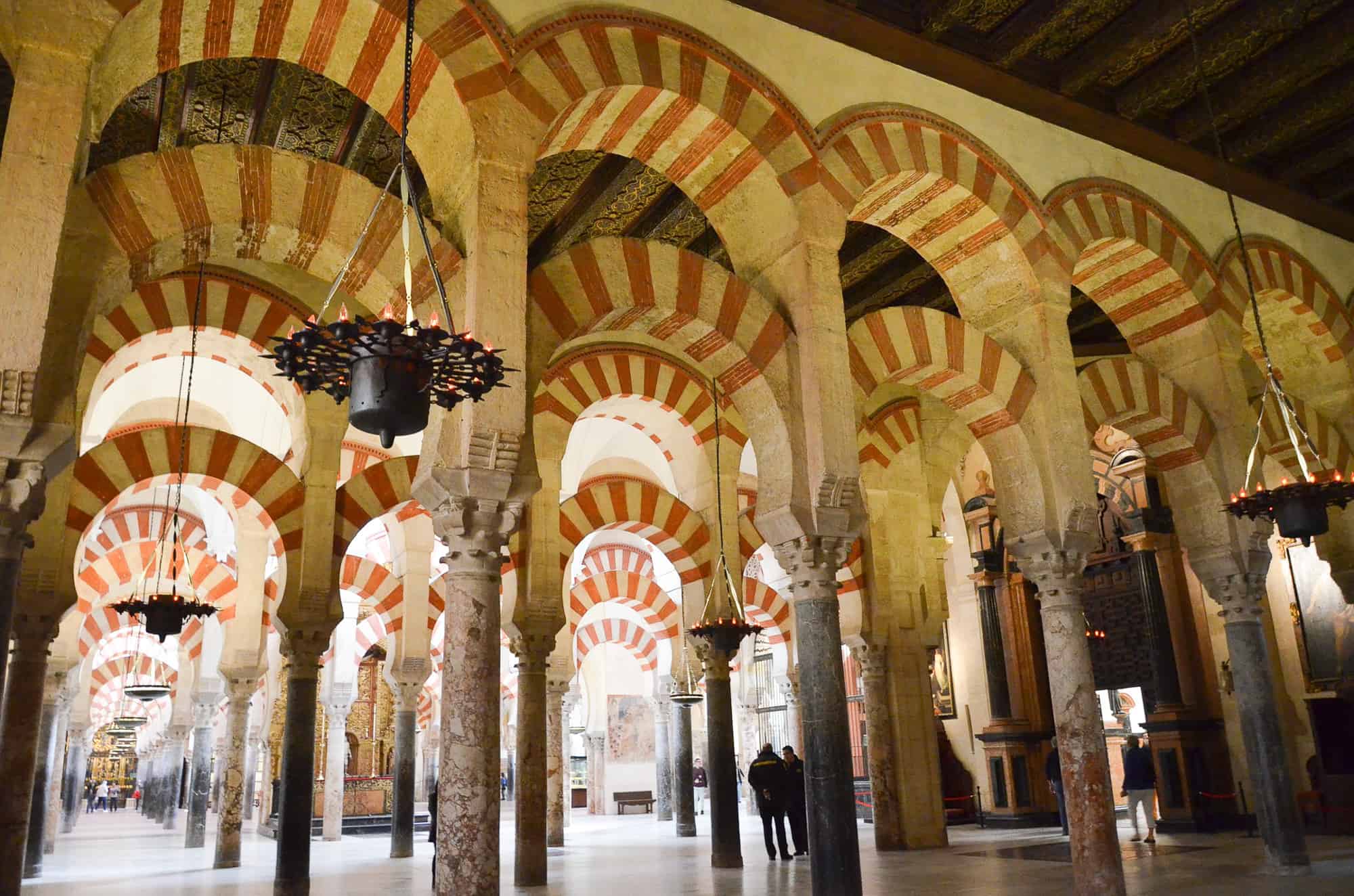
The Mezquita
Like many aspects of life in Andalucia, a lot changed when the Reyes Catolicos or Catholic Monarchs defeated the Moors and drove them out of the Iberian Peninsula. Until then, the building was a mosque. After the wars, it was converted to a Christian cathedral, complete with its own dome.
If that sounds like a dry historical footnote, it’s not. Walk inside the candlelit shadows of the Mezquita to see a mesmerising series of rose pink and cream arches one after the other after the other in formation.
Then look up to see the inside of the dome.
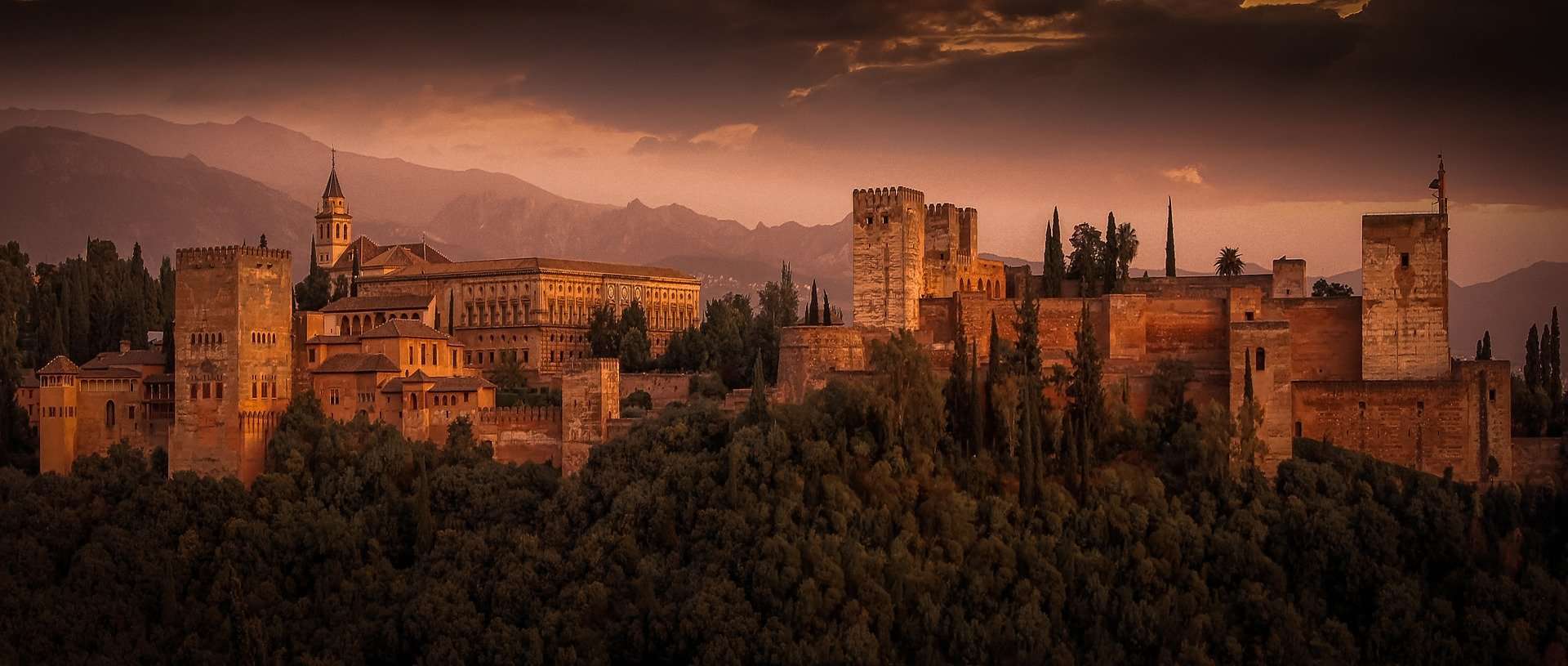
Granada
Named after the passionate pomegranate, the city of Granada would be an essential part of any southern Spain itinerary all on its own. But add in its prize attraction, the UNESCO World Heritage Site of the Alhambra and you’re looking at a bona fide, world class destination.
The Alhambra
There are UNESCO World Heritage Sites. And there are UNESCO World Heritage Sites.
Perched high on the deep green mountains of the snow-capped Sierra Nevada, the burned red stone of the Alhambra Complex is a sight to behold. Not only is it one of the best places to visit in southern Spain, it’s one of the best in all of Spain and a major highlight on any European itinerary. It’s hard to imagine that this palace of delicate mosaics, perfectly proportioned fountains and fragrant rose gardens came to life at around the time that draughty stone castles popped up in wet and windier climates in Europe. There’s simply no competition.
As well as being one of the most beautiful monuments in Europe, the Alhambra also carries the weight of its own bloody history. Read more about the story of the Alhambra over here.
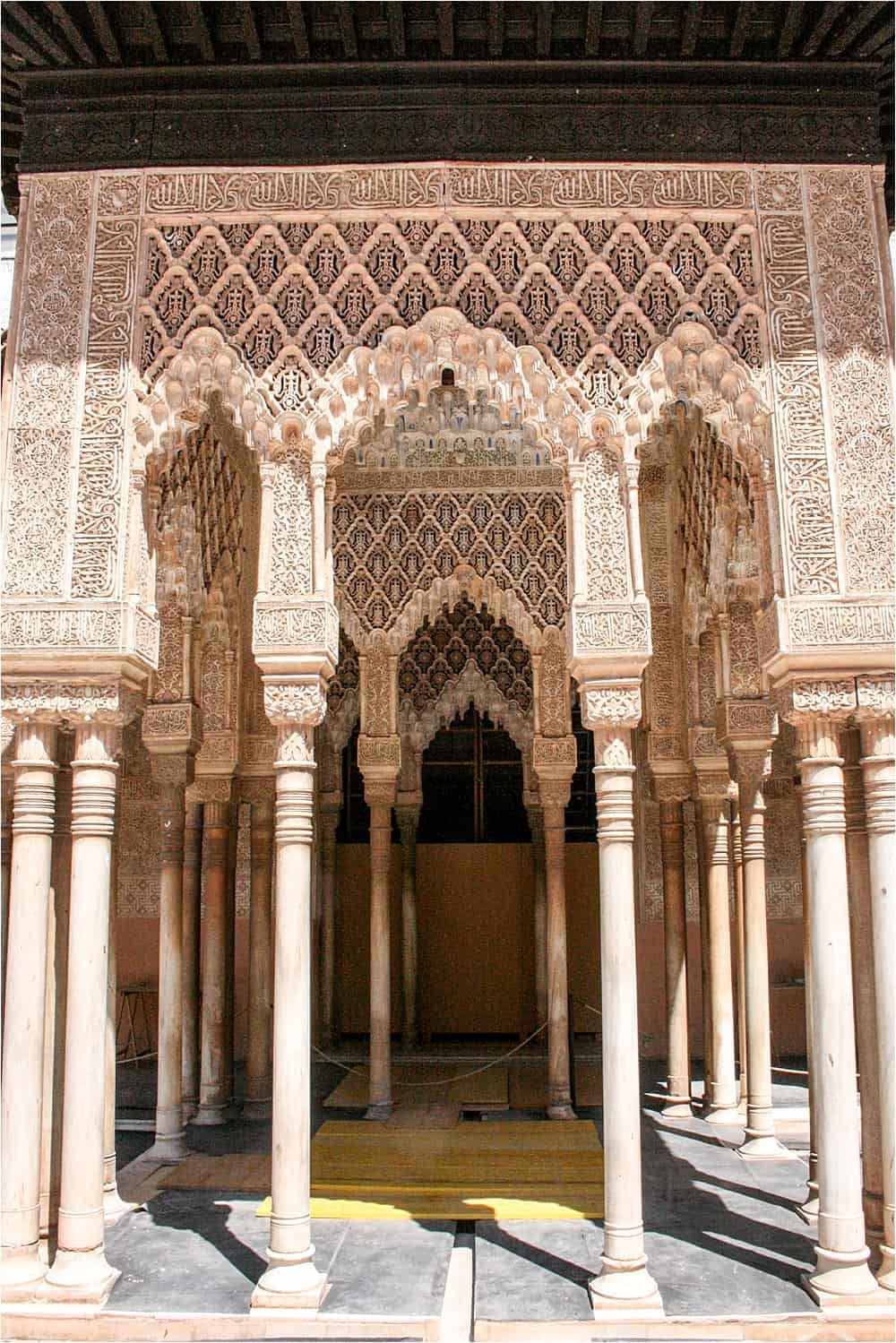
Visiting the Alhambra: You Must Book Tickets in Advance
To visit the Alhambra, you must buy tickets. And I mean you must! Tickets are sold in half hour slots online from here. If you’ve messed this bit up, you may still be able to enter the other areas but it’s the interior of the Nasrid Palace that’s the most spectacular to see.
Allow at least half a day for your visit and be aware that you’ll probably need to walk for more than three miles to see it all. Therefore, avoid if you possibly can the midday sun and opt for an early morning or evening slot instead.
Granada City Centre
The ancient Iberians, the Romans and the Visigoths have all enjoyed the fertile ground around the city of Granada, long before the Moors and the Christians battled it out on the peach-red earth.
As a university town today, it mixes honey-coloured medieval architecture with coffee shops and cafes, Fair Trade markets and live music venues.
The Best Viewpoint in Granada
Go up the steps from the Albaicín’s Calle Cruz de la Rauda to the Ermita de San Miguel church and watch the sunset across the Alhambra.
Save your walking energy for the Alhambra earlier in the day and then enjoy drifting around the steep streets and barrios of Granada afterwards. Enjoy an early aperitivo (in Granada, the tapas is complimentary) and then relax into an evening meal or else head straight into the Alpujarras Mountains if your’e keen on an early morning hike.
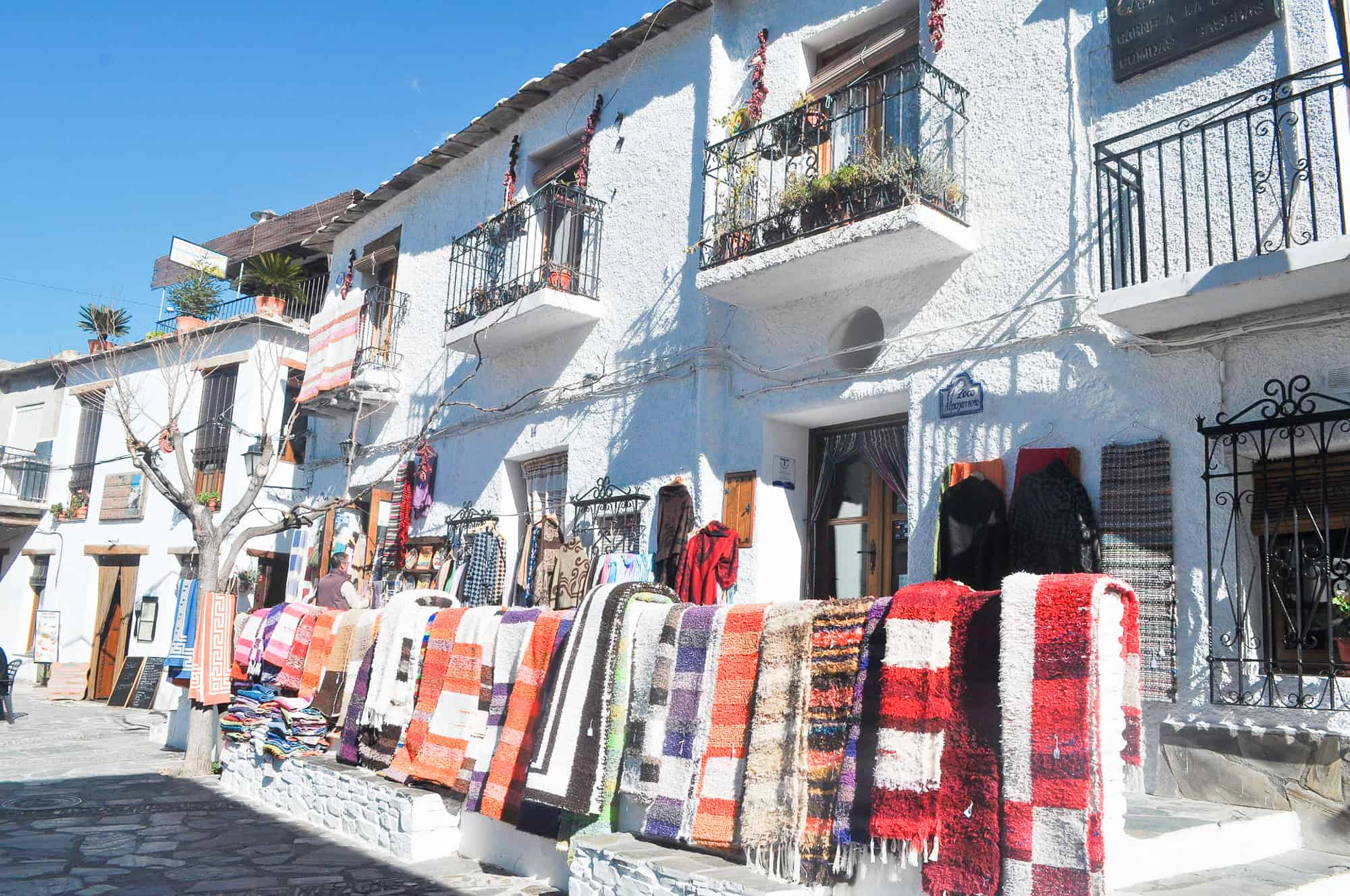
The Alpujarras Mountains
Perched on the southern slopes of the Sierra Nevada, the Alpujarras Mountains offer some of the most scenic and hair raising drives in the world.
These beautiful, remote hideaways provided shelter to the Moors who fled persecution from the cities of southern Spain, first from Seville in 1248 and then Granada after 1492. They were also the site of a bloody rebellion in 1568, where the Moors lost once again. Their choice was religious conversion or departure. And Christian soldiers from Galicia were brought in to keep the peace.
All that turmoil and bloodshed seems impossible to imagine now, as the streets of the Alpujarras whisper the scent of jasmine amid white washed walls, honeysuckle, hiking routes and calm.
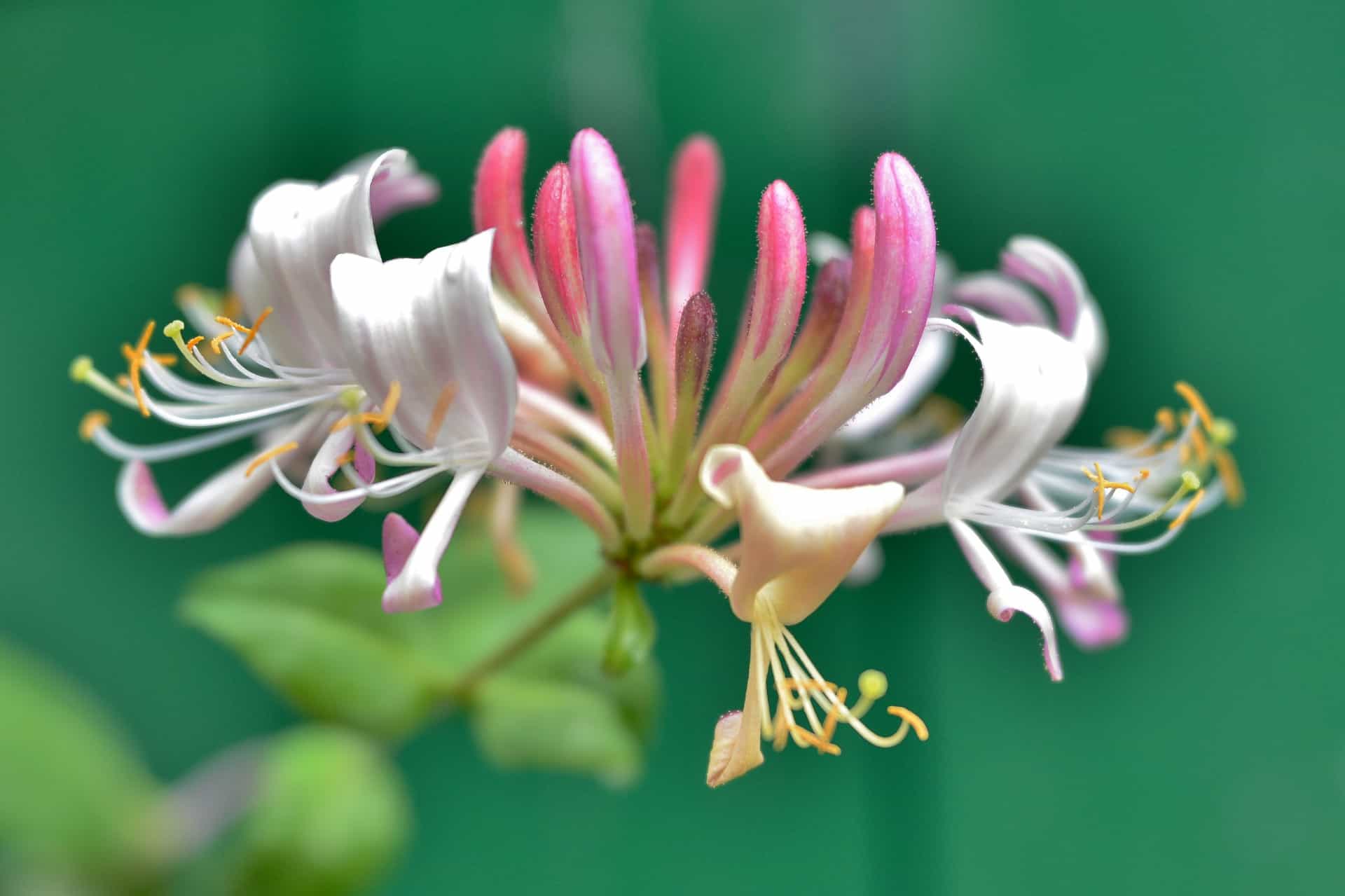
At Peace with Nature
The area is a respite from the energies of the cities. A balm for the heat felt elsewhere.
Not that the area has escaped the siesta. Visit in the afternoon to see handwoven rugs and carpets hanging down the sides of houses, blocking out the lights while residents sleep.
Look out for the traditional colours of red, green, black and white amid impossibly beautiful village walls.
Here is a place for quiet contemplation – or energetic hiking. If you have any time spare, shop for handmade baskets and pottery and reflect on your southern Spain itinerary so far.
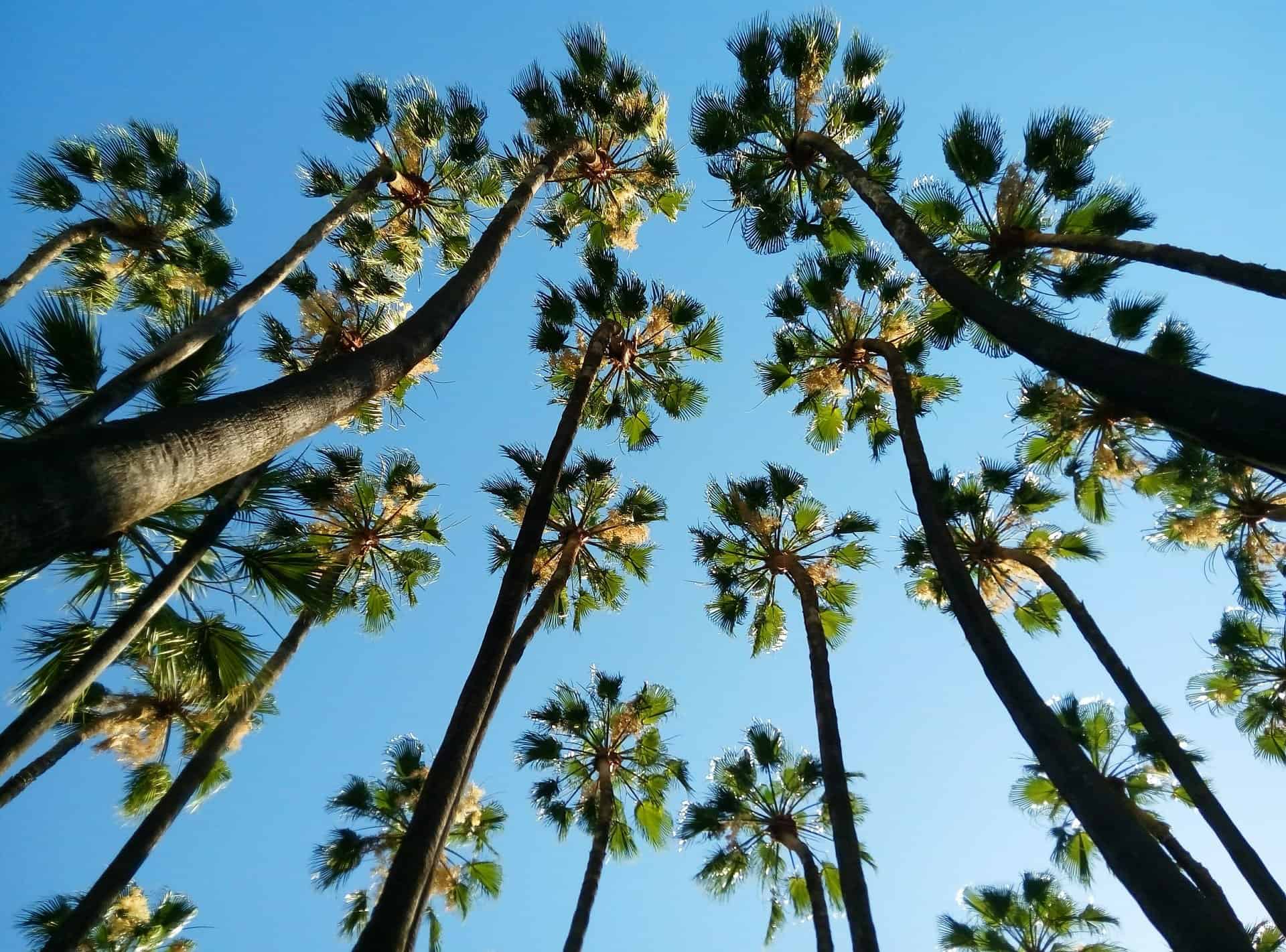
Malaga
And here you are at the end of your one week in Spain itinerary, back at Malaga.
If at all possible, I’d suggest you explore this gorgeous coastal city. Although it ‘s best known as the gateway to the popular tourist spot the Costa del Sol, it is a valuable destination to visit in its own right.
On the new side of things lies the Picasso Museum. Then there’s the headline stealing Pompidou Centre.
But my favourite part remains the old cobbled streets, the Roman Amphitheatre, the Moorish citadels of the Alcazaba and Gilfarbaro. And perhaps most of all: the beach.
Malaga is a great place to notch up one last Mediterranean swim before you need to travel to the airport and head home.
Travel Tips For Southern Spain
Here are the answers to some FAQs about southern Spain itineraries…
Where are the best cities to visit in Spain?
The Alhmabra in Granada is the best site to see, followed by the Mezquita in Cordoba. Seville is the biggest inland city and Malaga and Cadiz are the main cities on the coast.
Is it possible to see Portugal, Morocco and Spain in two weeks?
Not really, I would say! At a squeeze, you could combine two of the three, either Morocco and Spain or Spain and Portugal. But it will be rushed.
What is there to see in Spain while travelling if I like nature?
So many places! This southern Spain road trip itinerary includes the Doñana UNESCO World Heritage Centre but there’s also El Torcal Park and the hikes around the Alpujarras mountains.
More on Travel in Spain
- How to spend the perfect week in Spain
- The best road trips in Spain and their self-drive itineraries
- 40 Interesting facts about Spain
- Can you drink tap water in Spain?
More on Southern Spain
- Triana, the wrong side of the tracks
- The 15 tapas dishes in Seville you need to know
- A sneak peek into the olive oil harvest in Spain
- The truth behind those shocking images of Semana Santa in Spain
- Unlocking the quotes of the Alhambra in Granada, Spain
- The secret meaning of No8Do in Spain
- The best things to do in Seville, Spain
- What to buy in Seville: the perfect souvenir list
- Where to stay in Seville: your neighbourhood guide
Perfect Road Trip Planning
You’re in road trip heaven here, as we have everything from a full list of road trip essentials to the Ultimate Road Trip Planner.
We even have 101 fun road trip questions for your next drive, a collection of inspiring road trip quotes for your instagram caption ideas and a packing list for Spain. Happy planning!



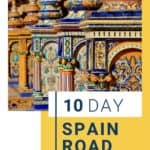



Super article, Thank you for making it easier for me prepare my itinerary to my favorite destination which i’ll be travelling to in 3 months time ;) asking out of curiosity do they have vegetarian food ;p?
Ah, you will have such a great time! You will be able to find vegetarian food but there isn’t a huge understanding about vegetarianism and veganism. Stick to dishes like salmorejo, gazpacho and pimientos de padron. Don’t be surprised if people look confused when you say you don’t eat meat – it’s still seen as a treat and mark of hospitality to give you animal based dishes. But it can be done! A lot of my extended family follow vegan and vegetarian diets and travelled happily enough through southern Spain.